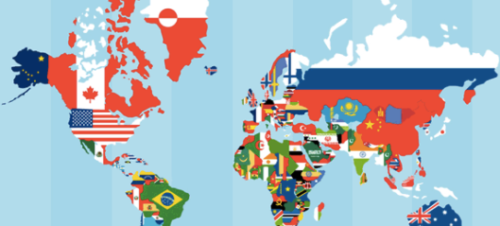Article
Intercultural Education: A Powerful Learning Tool
ID # 3745

Have you ever heard of the term Intercultural Education? If you said no, I am delighted to give some insight.
Intercultural education is such a powerful idea! It is the ability to utilize the world (with all of its complexity, diversity, and beauty) to teach students how to better understand that learning is a fluid experience. It is the blending of world events, cultures, languages and history. It’s the examination of a concept from multiple perspectives, in multiple contexts and in multiple mediums. I believe students are led to believe that education is a strict and methodical process without a power to gauge curiosity. They learn not that history is tangible but only that it need be remembered.
Intercultural education methods seek to change all that.
For example, when learning about the Cold War, students are often taught that it was a period of time in which the United States and the Soviet Union fought, in a strangely non-violent way, to become the leader of the globalized, post-World War era. They learn names, dates, and maybe watch a clip from a famous movie that sparks the interest the facts alone couldnt give. It isnt until later (or maybe not at all) that students learn that the Cold War continues to shape world politics and the international status quo today.
Students may be taught that the Cold War led to the manifestation of the United Nations or the World Bank, but they arent taught how that sequence of events continues to shape the utilization of foreign policy today. We definitely dont speak about the literature, music, or the importance of nationality, which helped to shape the language that would lead to the Geneva Convention and the Universal Declaration for Human Rights.
In other words, we dont successfully paint the tapestry that explains how interconnected events are. We don’t realize that events are not events in and of themselves: they are compliments of one another.
Intercultural education is a new way to address what a typical education does not. It takes historical events, for example, and conceptualizes them to encourage better understanding. To conceptualize human rights, for example, it examines the life of a Rwandan living during the genocide of 1992 or a Polish Jew who survived the Holocaust to why human rights led to the Geneva Convention and why these two cases, though they are on different sides of the world, still relate to one another. Using art, literature, music, and current events, students can draw their own conclusions and formulate their own opinions.
This is learning! Doesn’t it sound amazing?
If I am to ever become a teacher, I hope the students in my class are prepared to utilize all of their senses! I want to use intercultural education methods through direct engagement, hands-on learning. My students will not only learn about the Cold War, they will experience it from artistic, musical, linguistic, and scenic ways! This is but the beginning of intercultural education but it already sounds amazing!
Image from: http://condottiero.deviantart.com/art/Flags-of-the-World-87434149
Created By
Taylor Fulton
Hey out there! My name is Taylor Fulton and I am a proud Tar Heel at the University of North Carolina at Chapel Hill. I grew up in Atlanta, Georgia and joined the Carolina family in 2009. I study Peace, War, and Defense (with a concentration in National and International Security) and I am minoring in Arabic and Social and Economic Justice.